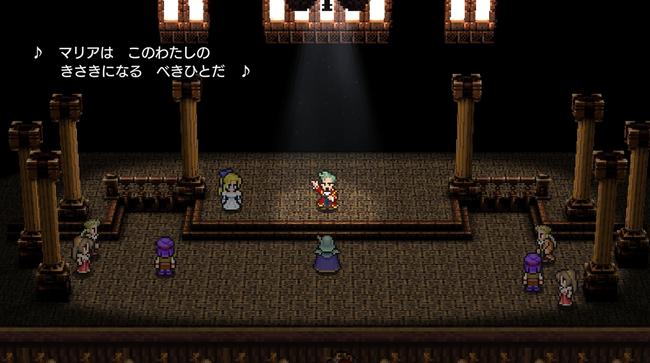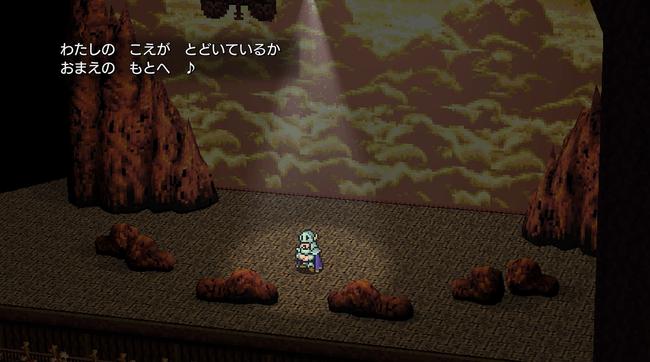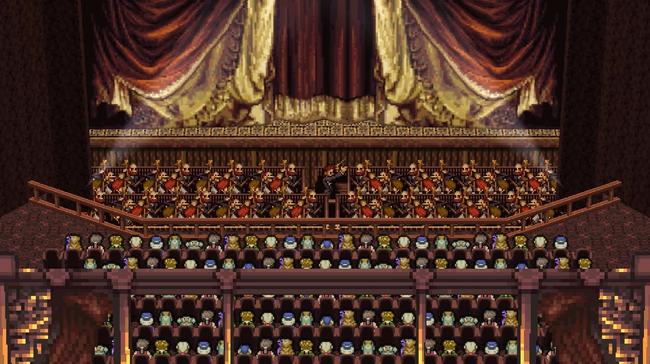
Final Fantasy VI Pixel Remaster’s HD-2D sequences look beautiful - but I sort of wish they didn’t exist
The Final Fantasy VI Pixel Remaster is upon us - and it’s undoubtedly the most hotly anticipated of the full six-game roster being released in this format. It’s easy to see why; while there are special aspects about all of the first five FFs, the sixth is where the series really crystallized into the form where it’d then go on to take over the world. So much of FF6 is a forebear for what would come in the PS1 era, which is arguably the golden age of the series. And for many, FF6 isn’t a precursor to the golden age - it is the series at its best. So, of course, it’s highly anticipated.
Imagine the excitement, then, when early magazine scans depicted some of the Final Fantasy VI Pixel Remaster with HD-2D graphics, similar to the style of those in Octopath Traveler, Triangle Strategy, and the newly announced remake of previously Japan-only SNES cult classic Live A Live. People were thrilled: many had wanted a HD-2D remake of FF6 specifically from the very moment they first saw Octopath Traveler. That was finally coming true - sort of.
But this is my problem. I wish it wasn’t sort of coming true.

For the most part, the Final Fantasy VI Pixel Remaster features the same visual presentation as the rest of the Pixel Remaster series. That is to say that it features a sort of amalgamation of art from all of the previous versions of the game - whatever works best - plus some new stuff, most notably redrawn sprites for the major characters. It’s also intended to be a ‘definitive’ version of the original game, which means that for better or worse content added on GBA has been deleted.
But, somehow, Square Enix is less committed to these ideals for FF6 than for any of the other games. That’s why we have these HD-2D sequences, where iconic moments like the Opera Scene have been entirely redone in the Octopath style. There’s no denying that it’s beautiful - but I really wish they hadn’t done this.
The reason is simple. The original Final Fantasy VI had a consistent visual style that carried throughout the game. From start to finish, the presentation remains the same - and the game is stronger for it. It’s fair to note that later FF titles embraced the concept of wildly different graphical styles - FF7 arguably has three completely distinct art styles that it flits between at will - but FF6 was not like that. Except in this version, briefly, it switches styles.
The purpose of the Pixel Remasters, Square Enix said, was to offer definitive versions of the original games with minimal changes. That’s why content and changes from older versions were cut - like restoring the original charge-based magic system to FF1 and removing new dungeons and story beats from other titles. Crowbarring in HD-2D sequences into the original FF6 goes against this mantra - and feels a complete contradiction with how these games were originally announced.

“This project began because we wanted to create a convenient way for fans and new players to enjoy these original classics, with consistent graphics and a unified user interface,” said Yoshinori Kitase, one of the FF brand’s highest-level executive decision-makers and the producer on the Pixel Remasters. Except now, one of the games doesn’t have consistent graphics even within its own presentation - leave alone when compared to the other five games. I just do not get it.
Weirdly, Square Enix understood this well enough before. The PS1 versions of the 2D Final Fantasy games introduced CG full motion video sequences to each game - adding that era’s hot commodity to a classic game. But it had the common sense to do it outside of the main context of the rest of the game. FF6’s PS1 version features new FMVs that bookmark the original experience, plus some bonus video unlocked in menus. Once you begin the game, it is more or less as it was on SNES - as it should be.
If Square Enix wanted to remake FF6 in HD-2D, if they believed it deserves that treatment as it surely does - that’s great. Then they should remake it in HD-2D. This tease, where a tiny section of the game toys with that possibility before returning to the SNES-style presentation, feels like a mistake. The music in the Pixel Remasters is all consistent, all lovingly remade by modern means to great effect. This is like if only certain tracks had been remastered, while others languished among the limitations of the SNES sound chip.

Ultimately, I think it’s a bit silly. Rather than the promised definitive version of the SNES FF6 with improved visuals, new music alongside minor tweaks and changes - as delivered for the other five games - we now have a new branch that stands alone. Not quite SNES, not quite GBA. The SNES is more aged, with a ropey translation. The GBA has more content, but worse music. This version has subtle changes, but also removes the game’s solid visual consistency throughout in order for a quick hit of today's hot new JRPG visual style. It's like what they did with CG on the PS1, but this time it actually interrupts the core game.
There’s an air, to me, of throwing the baby out with the bathwater, even if the new stuff is great looking. Ultimately, this version is now something new. Rather than the one true FF6 you can play for years to come, there’s simply now a new debate about which version might be best. For me, all the HD-2D sequences accomplish is making me long for a proper HD-2D remake - which doesn’t appear to be forthcoming.
So, yeah. I really don’t get it. Don’t get me wrong; I’ll marvel at the beauty of the remastered opera, and it’ll be brilliant to hear its song sung in-game in a variety of languages. But I really wish it didn’t come at the cost of the original FF6’s artistic consistency, something which made it one of the most beautiful and ambitious games of its time. Up until now, I thought I understood what the Pixel Remasters were supposed to be - definitive and staunchly accurate re-releases - but this has thrown me for a loop.